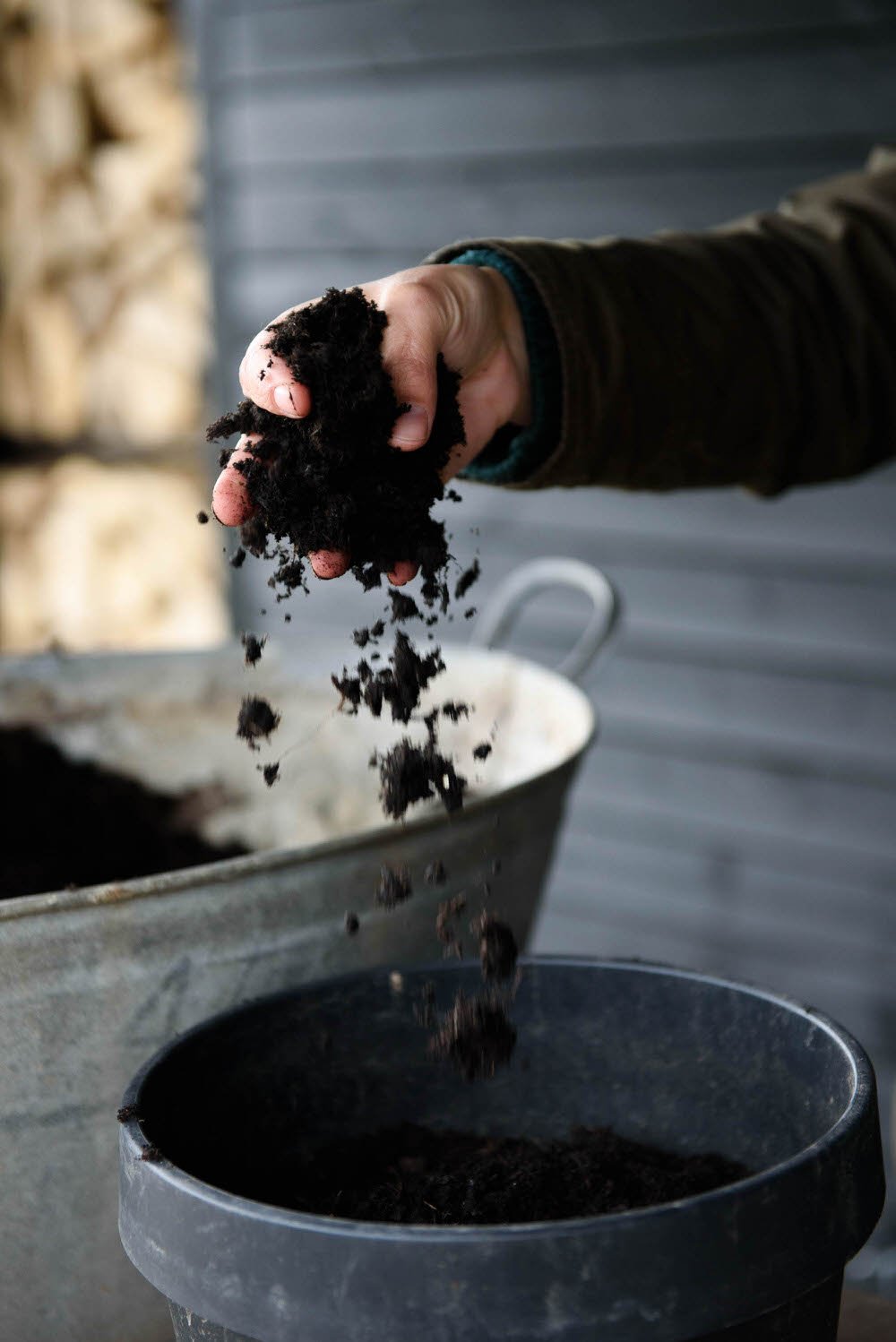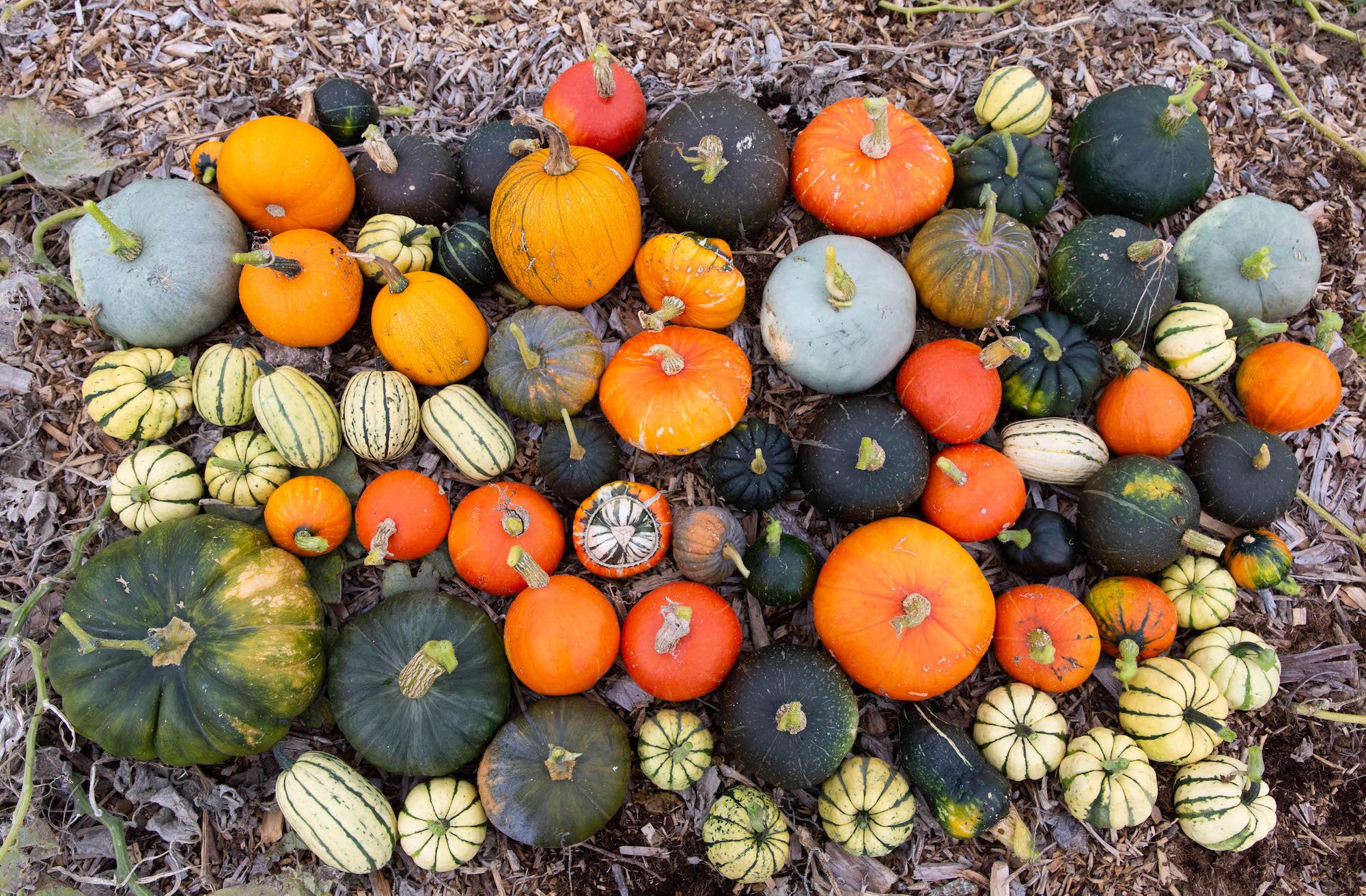How to choose the right compost
Compost. Hardly the most exciting topic in the world of gardening. Not when we could be talking about elegant flowers or lush leaves or even adorable little hedgehogs…
But though compost isn’t the most evocative of topics, it is, nonetheless, one of the most important things to get right if you want to grow excellent, healthy plants.
The choice of compost available to buy can feel a bit overwhelming. Standing in the compost section of a garden centre, bags and bags stretch out as far as the eye can see, with mixes seemingly devised for every horticultural situation possible.
But before you head straight for the trusty multi-purpose, have a quick read of this guide, which will give you the ins and outs of the different types of compost available, and which ones are best to use when.
What’s in compost?
First things first, what exactly is compost?
And why use it, rather than just taking some soil from the ground?
What we refer to colloquially as “compost” would actually be called “potting mix” or “growing media” in horticultural terminology and this better describes the use of the stuff. It’s a mix of ingredients designed to be used in pots (or seed trays etc) to support the growth of a plant.
Compost has quite a few advantages over soil dug from the garden.
For a start, it is usually much lighter, which makes it easier to carry. It has been sterilised to remove diseases, pests and weed seeds, so you can grow your plants in it safe from competition / attack from any of them. And it usually has added nutrients – the minerals that plants need to grow.
Depending on what the compost is being used for, the mixture will have been formulated to best support that kind of growth. So a seed compost, for example, would have less nutrients than a compost designed for a well-established plant growing in a pot.
Some potting mixes do actually contain soil from the ground (though in horticultural terms this is called “loam”) to provide a good solid bulk and weight. The famous John Innes mix uses loam for many of its varieties. But this will always be sterilised first to remove any diseases and pests.
Peat or peat free?
First up, the big question, do you go peat free? The destruction of the peat bogs in order to provide compost for gardeners is now well known. Peat is created by partially decomposed materials that have become trapped inside bogs. It takes about a year for peat to increase by 1mm, so removing 1m of peat is destroying an ecosystem that would take another 1,000 years to re-form, and releasing huge quantities of carbon at the same time.
So why on earth does anyone carry on using it?
Quite simply, peat is really good at its job in compost. It’s lightweight, which makes it much easier to carry, it retains moisture well so plants don’t dry out and need watering less often, and it’s good and friable – that is, easy to crumble and not prone to getting stuck in clumps, which means plant roots can make their way through it.
However, the non-peat options are improving all the time. There’s a huge range of other choices available, with composts based on coir, composted bark, wood fibre, and well-rotted organic matter. In the past, peat free composts often tended to dry out very quickly, but that is improving with recent mixes and, to be honest, we feel that it’s never really okay to dig up the really important eco system of the peat bogs in order to stop your compost drying out too fast. So for us, it’s peat free every single time.
Compost packaging tends not to advertise when it has peat inside (in fact, many mixes containing peat even advertise themselves as “organic” because they’re made from a natural source!) so only choose bags that actually say “peat free” on the outside. If they don’t say that, they almost certainly have peat inside.
Some of our favourite brands of peat free compost are…
Sylvagrow by Melcourt
Melcourt produces a range of different peat free composts (as well as soil conditioners and mulches).
You can’t buy direct from the company, but they are stocked by lots of garden centres and plant nurseries -- some of whom also offer delivery. See their suppliers page for a full list.
Dalefoot compost
All composts are peat free and made from a bracken base, in the Lake District. Online ordering with delivery available for most of the UK and Ireland.
Fertile Fibre
An entirely peat-free company that sells coir based composts.
Choose from organic, vegan or biodynamic mixes.
New Horizon by Westland
The New Horizon range is all peat free, however, Westland are a large company, who make a number of other composts including peat.
Ultimately, even if you are buying the peat free version, you are still giving money to a company that does extract peat. Widely available, though, so a good option if you are struggling to find a supplier for the first three options.
Which compost when?
Different mixes of compost have been made for different uses. Depending on what you’re planning to do, there is almost certainly a compost that has been formulated to perform well for that task. Here’s an overview of some of the most common, and useful, different types of compost.
Compost for pots
You can also buy composts which have fertilisers mixed in to them already, such Gro-Sure composts. These will feed your plant with the appropriate nutrients for longer – whatever the amount of time they specify.
Remember with all plants growing in pots that they will eventually use up the nutrients in the compost, so you will need to feed the plant regularly over the growing months after this happens. Check your compost bag for details, but it is usually anywhere between 6 weeks to 6 months.
Another good tip with plants in pots is to scrape off the top of layer of compost after a year or two and replace with some that is fresh (and nutrient filled).
A lot of the time, when we buy compost, it’s to go into pots for planting established plants. And this is when a multi-purpose compost would do well.
If you’re growing a plant in a pot, it is going to need to get all of its nutrition from the compost, it’s going to need to retain moisture, and you also want it to have a bit of weight to anchor the roots and stop the pot falling over.
Multi-purpose compost is great for this, or choose a peat-free John Innes mix for number 2 (“potting on compost’) and number 3 (“mature plant compost’). Do check with any “John Innes” composts that they are peat-free -- Sylvacourt by Melgrow and Levingtons both offer peat free John Innes mixes.
Seed compost
Specific seed compost is easy to find, but what, exactly is the difference?
Firstly, the compost will typically be finer, as the small seeds need to be able to germinate and put their roots into their growing medium. This can be harder for newly emerging seedlings to do if they encounter big blocks of heavy compost, or large chunks
of bark for example. You can recreate the texture of seed compost by sieving a standard compost, or removing large parts by hand.
Secondly, seed compost will have lower fertility – that is, less nutrients in it. This is because as the seeds germinate and start to grow, they actually contain all of the nutrition that they need, so their roots aren’t taking this up from the surrounding soil.
By the time the seedlings have emerged and are ready to prick on, you can move them into a richer, more fertile compost mix.
Some seed germination can actually be inhibited by higher levels of fertility as well, so a specific seed compost can be preferable for that reason too.
Grow-bags
Some compost bags are designed to be used as they are – the bag placed into the garden and plants grown straight out of it. This is most commonly used for annual fruit and veg such as tomatoes and cucumbers.
These bags have been designed to lie flat, length wise, and usually have circles marked into the top where you can remove a hole and plant your plug plants straight into position.
Grow bags also have high levels of nutrients, usually included in a slow release form. Annual veg that goes from seed to producing a crop in just one year has really high requirements for nutrients (they are doing such a lot, in such a short space of time, that they need all the energy they can get!) Grow bags have enough fertiliser included in the compost to last for the growing season, so all you need to do is plant the plant and then water it. It’s great if you’re not sure how much fertiliser to use, or you just want to know your plants will grow well without remembering to feed them.
Ericaceous compost
Ericaceous compost is another way of describing compost with higher acidity levels. Some plants – known as ericaceous plants – thrive in more acidic soils. A typical example of this is hydrangeas (which turn blue in acid soils or pink in alkaline soils) or blueberries. If your garden soil is neutral or alkaline, then you’ll need to grow these plants in pots with specifically purchased ericaceous compost. (You can even sink a pot into the soil, filled with the correct compost, if you wanted to give the illusion that the plant is growing directly in the ground!)
Again, the levels of acid in the compost will tend to decrease over time, so it is a good idea to replace the top layer every year or two in order to keep it suitable for the plant.
Making your own compost
If you’ve got room for a compost bin in the garden, then making your own compost is a great alternative to buying it in, more environmentally friendly and saves money too.
Slightly confusingly, the black sludge that you get from a fully composted compost bin is not actually “compost” that you can use straight on plants, but rather what is usually called “well rotted organic matter” in horticulture. This is incredibly high in nutrients and is fantastic at improving soil as well, but is too rich to use directly on its own.
To turn it into a compost that you could put in pots, you need to mix it up with a few other things.
There are huge amounts of different recipes for different uses / created by different people, but a basic no-nonsense multi-purpose mix could be made with:
One part rotted organic matter
One part topsoil
One part horticultural sand or perlite.
Mix them all together and fill your pots!







